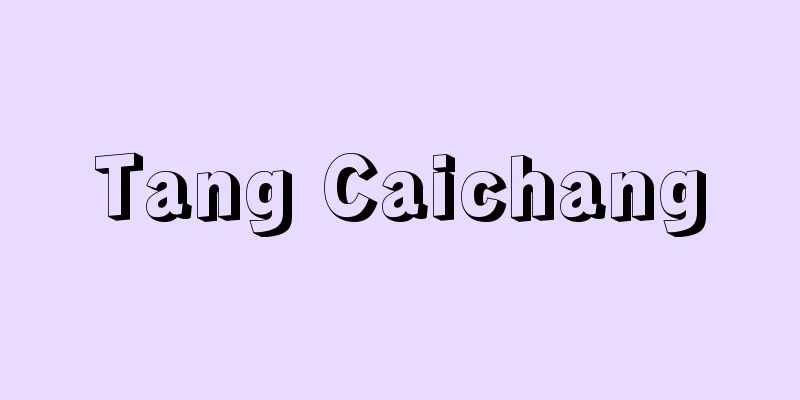Omura Domain - Omurahan

|
The Tozama Domain was located in the Sonogi region of Hizen Province (Nagasaki Prefecture). The feudal lord was the Omura clan. In 1587 (Tensho 15), Toyotomi Hideyoshi's Kyushu Chigyowari (division of Kyushu domains) allowed the Omura clan (Yoshisaki), who had long ruled the Sonogi region, to retain their territory, which continued until the abolition of the domains and establishment of prefectures. A land survey was carried out in 1599 (Keicho 4), and in 1607 (Keicho 12), the traditional fiefs of 13 clans were confiscated, and a system of modern ownership was established. A re-survey in 1612 revealed over 27,900 koku, which became the Omote-daka (front land). A total land survey was carried out within the domain from 1631 to 1633 (Kan'ei 8 to 10), and the tax rates of the kurairi land were unified. In 1662 (Kanbun 2), the tax rate was revised to include village official fees, and this became the standard thereafter. The Kyoho reforms included a temporary conversion of the local fief system to a stipend system, a revision of the direct salt payment system, and a partial change to silver payment for county labor duties. Whaling was also practiced, but after the severe famine of 1732 (Kyoho 17), whale oil came to be used to eliminate whale pests, and with demand increasing nationwide, it became a local specialty. The domain school included Shugikan (later Seijuen), which was established during the Kanbun era (1661-1673), but in 1790 (Kansei 2), the school system was revised to establish Gokokan, and a martial arts training center, Jishinken, was built to promote the study of both literature and martial arts. In 1811 (Bunka 8), an attempt was made to change the local chigyo system to a stipend system, but it was restored to the old system after just over two years, and reforms to the domain system such as the division of duties were also implemented. During the late Edo period, under the rule of the 12th lord, Sumihiro, reforms to a Western-style military system were promoted in connection with the guarding of Nagasaki, and amidst complex internal conflicts within the domain, the Sonnno Joi faction gained control of the domain government, and in alliance with the Satsuma and Choshu clans, they played a major role in the movement to overthrow the shogunate. In July 1871 (Meiji 4), it became Omura Prefecture, and in November it merged with Nagasaki Prefecture. [Nagano, Japan] "Omura City History, Volume 1" (1961, Omura City) "Nagasaki Prefecture History, Clan Government Edition" (1973, Nagasaki Prefecture) [Reference] |Source: Shogakukan Encyclopedia Nipponica About Encyclopedia Nipponica Information | Legend |
|
肥前国(長崎県)彼杵(そのぎ)地方に置かれた外様(とざま)藩。領主大村氏。1587年(天正15)の豊臣(とよとみ)秀吉の九州知行割(ちぎょうわり)によって、古くから彼杵地方を支配していた大村氏(喜前(よしさき))が所領を安堵(あんど)され、廃藩置県まで続いた。1599年(慶長4)に検地が行われ、1607年(慶長12)には一族一門13家の従来の知行地は没収されて近世的領有の体制が整えられた。1612年の再検地では2万7900余石が打ち出され、これが表高となった。1631~1633年(寛永8~10)に領内総検地が実施されて蔵入地の貢租率が統一された。さらに1662年(寛文2)には、村役人費用などが加えられた貢租率に改められ、これが以後の基準になった。享保(きょうほう)の改革においては、地方知行(じかたちぎょう)制の俸禄(ほうろく)制への一時的転換、塩納入直納制の改正、郡夫役(こおりぶやく)の一部銀納化などが行われた。捕鯨も行われていたが、1732年(享保17)の大凶作以後は、鯨油が浮塵子(うんか)駆除に用いられるようになり、全国的に需要が高まったので特産品となった。藩校には寛文(かんぶん)年間(1661~1673)設置の集義館(のち静寿園)があったが、1790年(寛政2)に学制を改めて五教館(ごこうかん)が設けられ、演武場の治振軒をつくって文武併修が計られた。1811年(文化8)に地方知行制の俸禄制への転換がふたたび試みられたが2年余で旧に復し、また役目部割(ぶわり)制などの藩制改革がなされた。幕末期、12代純煕(すみひろ)のとき長崎警固との関連から洋式軍制への改革が進められ、また複雑な藩内抗争のなかで尊攘(そんじょう)派が藩政を掌握してゆき、薩長両藩と連合して討幕運動に大きく関与した。1871年(明治4)7月大村県となり、11月長崎県に合併。 [長野 暹] 『『大村市史 上巻』(1961・大村市)』▽『『長崎県史 藩政編』(1973・長崎県)』 [参照項目] |出典 小学館 日本大百科全書(ニッポニカ)日本大百科全書(ニッポニカ)について 情報 | 凡例 |
>>: Omura West Cliff - Omura West Cliff
Recommend
Arenaria verna (English spelling) Arenaria verna
… [Eiji Miki]. … *Some of the terminology that me...
The Heart of Midlothian
A masterpiece by the English novelist W. Scott. Pu...
Thomson, J. (Physics) (English) ThomsonJ
…Born in Belfast, Ireland, his real name was Will...
Yellow mulberry parasitism wasp - Yellow mulberry parasitism wasp
...They parasitize scale insects, aphids, whitefl...
Ban Biao - Tiger leopard
[3~54] Chinese historian of the Later Han Dynasty....
Bora, K.von (English spelling)
…In the spring of 1825, during the height of the ...
Thívai (English notation) Thivai
Thebes was founded in the 15th century by the Gre...
Japanese Olympic Committee
Abbreviated as JOC. A committee stipulated in Cha...
Molding frame - Iwaku
…The molding sand is prepared in advance, that is...
Carneiro, RL (English spelling)
… However, today, most anthropologists, when disc...
Supraaural type
...Head-mounted headphones are called headphones,...
Khalwati (English spelling)
...Specifically, there are ties between tariqas a...
Zabolotskiy (English spelling) Nikolay Alekseevich Zabolotskiy
1903‐58 Soviet poet and translator. Born into a fa...
Maupeou, René-Nicolas-Charles-Augustin de
Born: February 25, 1714, Paris [Died] July 29, 179...
《Phonetics Textbook》 - Onseigakukyohon
…His natural talent and insight in phonetics led ...

![Seika [town] - Seika](/upload/images/67cbfc74092b4.webp)







